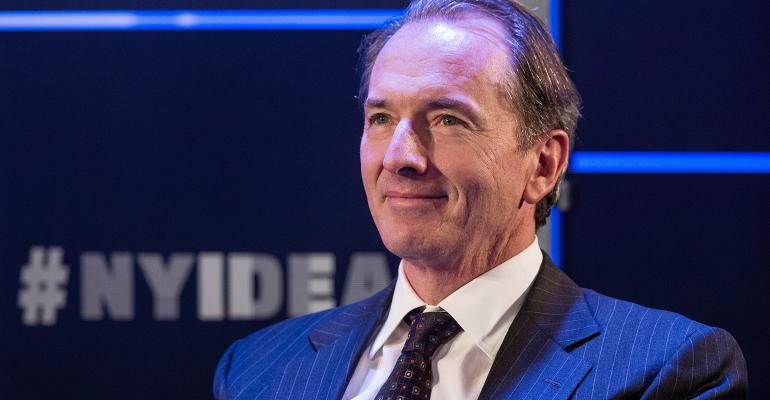By Elizabeth Dilts
NEW YORK, July 19 (Reuters) - After Morgan Stanley's wealth management business reported record quarterly revenue and hit the high end of its profit margin target on Wednesday, analysts wanted to know how sustainable those results are.
Rising stock markets, another Federal Reserve interest rate increase and strong loan demand helped the business generate $4.2 billion in revenue and $1.1 billion in pretax income, both records for the bank.
Its pretax profit margin of 25 percent came in at the top of Chief Executive Officer James Gorman's targeted range of 23 percent to 25 percent by the end of this year.
But on a conference call with analysts, Gorman and Chief Financial Officer Jonathan Pruzan were peppered with questions about whether the business will lose deposits, face a talent flight or see lower-margin digital alternatives cannibalize its profits. Five out of 11 analysts on the call focused at least some of their questions on wealth management.
Pruzan avoided giving a definitive outlook when asked whether the business will produce 25 percent margins through the end of 2017. Instead, he cited factors that helped the business in the second quarter and highlighted Morgan Stanley's efforts to increase lending and move more customer assets to accounts that generate consistent fees rather than charge customers per transaction.
"We feel very good about the results," he said.
Morgan Stanley has made wealth management a much bigger part of its business since the 2007-2009 financial crisis, when it agreed to acquire Smith Barney and create one of the largest U.S. brokerages.
Since combining the businesses, profit margins have more than doubled but remain below rival Bank of America Corp , whose pretax profit margin in wealth management was 28 percent last quarter.
To boost profits further, Morgan Stanley has been trying to look more like a traditional lender. It now offers deposit accounts, digital banking options, mortgages, co-branded credit cards and other types of loans. Deposits can be an inexpensive source of funding for banks, as long as they can put them to work in profitable ways.
Morgan Stanley's deposits fell by 7 percent during the quarter, reflecting a broader trend of wealthy customers quickly moving money to more profitable vehicles after the Fed rate hike and also using some to pay taxes.
Asked about that decline, Pruzan noted Morgan Stanley has been rolling out products like certificates of deposit that offer higher interest rates. He also said the bank has generated strong income from the deposits because the rate it pays customers is much lower than the rate it charges for loans.
A key source of profits was securities-based lending, in which Morgan Stanley extends loans to customers using their investments as collateral.
In terms of talent, Morgan Stanley is curbing costly recruitment efforts, the primary way brokerages attract new client assets.
Pruzan defended that strategy, saying it has been "helpful to the business" to focus on retaining existing advisers.
The bank plans to launch a digital option for customers with as little as $5,000 later this year that will charge less than what clients pay for traditional financial advice.
Gorman dismissed worries that the so-called "robo-adviser" will replace humans, arguing that sophisticated customers value service from advisers.
"We actually saw this movie once before in 1999," he said, referring to self-directed trading accounts offered by online brokers that became popular around the time of the dot-com bubble.
"The big fear was cannibalization," he said, but "it didn't play out that way."
(Reporting By Elizabeth Dilts; Additional reporting by Olivia Oran; Editing by Lauren Tara LaCapra and Meredith Mazzilli)





